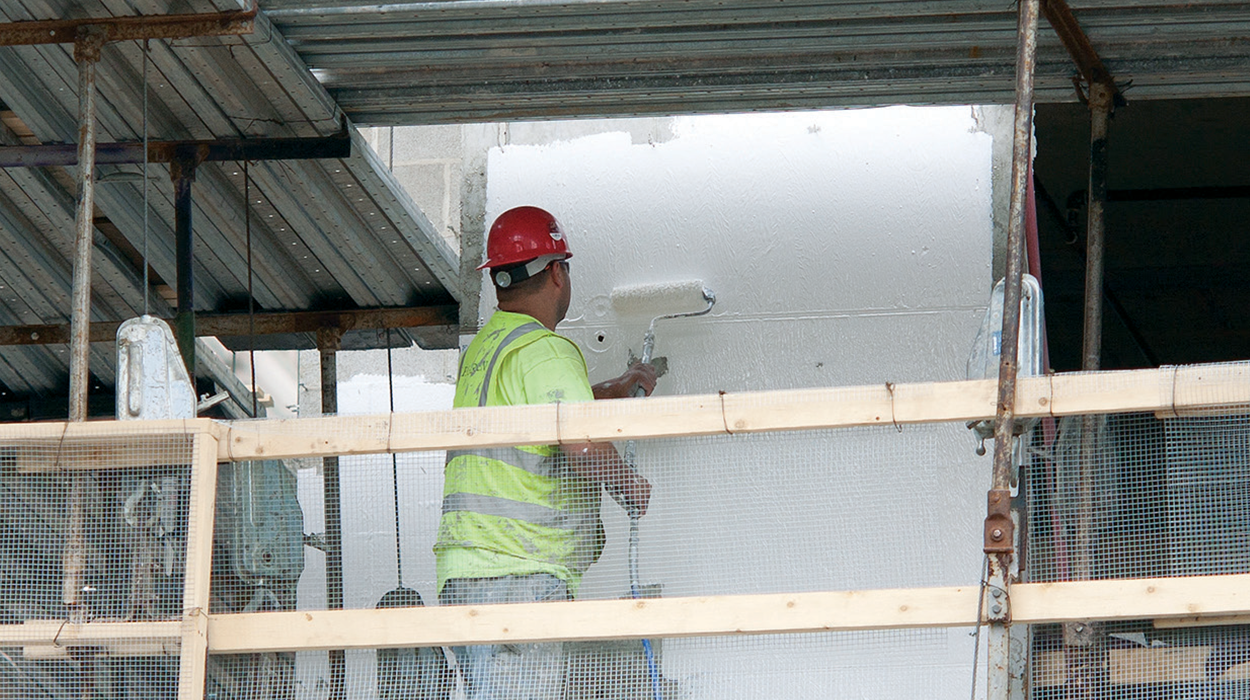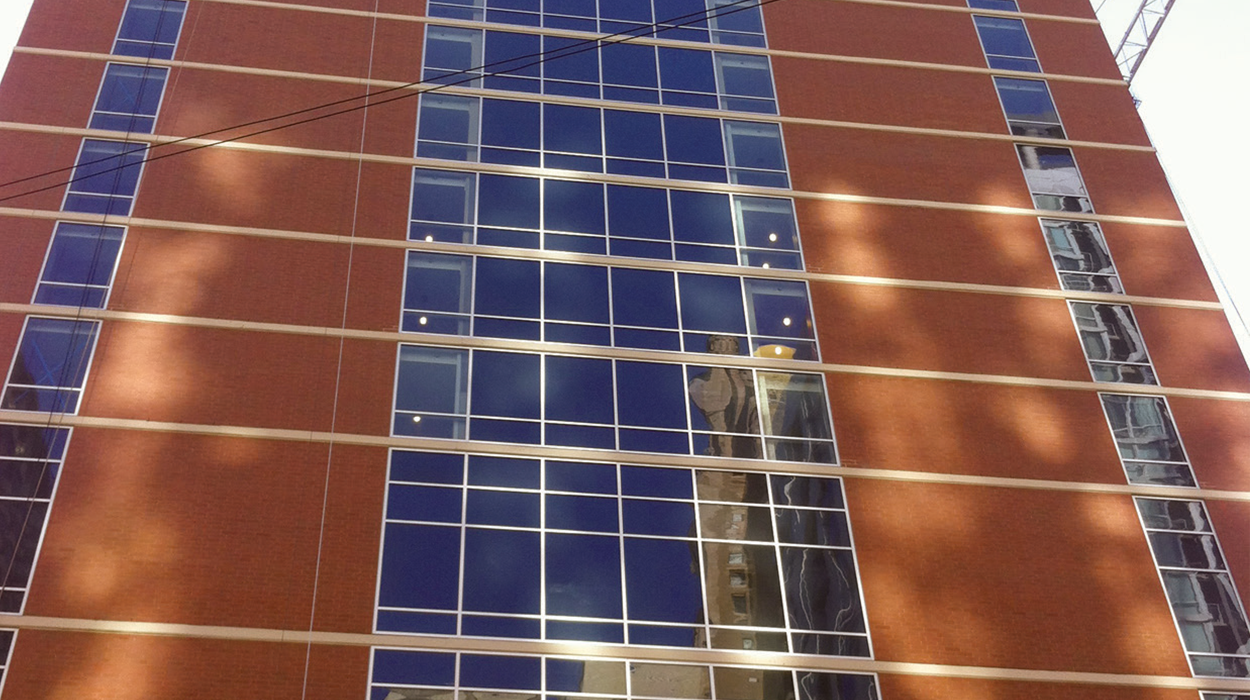Ronald McDonald House® and Tyvek®
Case Study |
Tyvek® Fluid Applied Weather Barrier Protects Ronald McDonald House®
Ronald McDonald House Charities®
The installation of a DuPont™ Tyvek® Fluid Applied Weather Barrier helped Ronald McDonald House®, a global nonprofit that provides housing and other support for families with a sick child, earn points toward Silver LEED certification for its largest facility to date.
Challenge
In 2009, Ronald McDonald House Charities® of Chicagoland and Northwest Indiana decided to build the world’s largest Ronald McDonald House® in the heart of Chicago. One goal was for the building to achieve Leadership in Energy and Environmental Design (LEED®) Silver certification.
Project manager Michael Lucansky, of the architectural firm Antunovich Associates, was charged with evaluating the use of DuPont™ Tyvek® Fluid Applied Weather Barrier (WB) for the 15-story, cavity wall/brick veneer building.

Because it can be easily applied via spray or power roller, Tyvek® Fluid Applied WB can be a cost-efficient air and water barrier solution for large and complex structures.
“Although we were very familiar with DuPont™ Tyvek® Systems, we had no experience with the new DuPontTM Tyvek® Fluid Applied offering,” said Lucansky, who wrote the original specifications. He had designed the building envelope after consulting with independent representatives from the Air Barrier Association of America (ABBA) and other organizations.

Because of the lack of familiarity with Tyvek® Fluid Applied WB, one concern that was raised by the architect team was compatibility of this Fluid Applied weather barrier with the other materials and systems that were specified for use on this project. “The general contractor took the lead; however, we worked with DuPont directly to verify compatibility,” explained Chuck Kennedy, principal in charge at Antunovich Associates.
Solution
After reviewing the technical information and comparing it to the requirements for the project, the architects determined that Tyvek® Fluid Applied WB exceeded performance specifications for air permeance, elongation, water vapor permeability, and surface-burning characteristics.
To ensure the most effective installation, the construction team worked closely with members of the DuPont™ Tyvek® Specialist Network, an elite team of highly skilled field representatives unique to the industry, who offered on-site consulting and training on DuPont weatherization products.
The design of the new Ronald McDonald House® in Chicago includes many inside corners and protrusions, as well as numerous surface irregularities, due to its poured-in-place concrete and concrete block construction. “These features would present challenges for building wrap products,” noted Kennedy, “but they were no issue at all for Tyvek® Fluid Applied WB.”
The team also created a mock wall at the window supplier’s facility, where they proved compatibility under conditions appropriate to the new building. Any remaining doubts about the Fluid Applied Weather Barrier were quickly erased after this trial.
Construction on the new Ronald McDonald House® began in January 2011. Tyvek® Fluid Applied WB was applied over a 4-month period, beginning in September. During this timeframe, the installers encountered a wide range of weather conditions, including some very cold temperatures. The one constant was the ease of application they experienced with this Fluid Applied Weather Barrier.
“This building uses a brick and block wall system,” stated Evans. “The Tyvek® Fluid Applied WB was applied on the block wall, then two inches of rigid insulation were installed on the face of the block, two inches were left as a void, and then four inches of brick completed the wall.”
For the finished project, “Tyvek® Fluid Applied WB will help keep water out of the building,” said Evans “and prevent mold from forming. It also will help serve as an air barrier, which is a huge part of meeting energy requirements.”
Key advantages
Applied in a one-coat application by spraying or power rolling, Tyvek® Fluid Applied WB delivers superior protection, offers enhanced durability, and saves time by providing two to three times the coverage of competitive fluid applied materials.
Other benefits include:
- Can withstand nine months of UV exposure.
- Can be applied on damp walls at temperatures as low as 25°F.
- Will not wash off in rain while curing.
- Rapid application helps simplify scheduling.
- Has high elasticity to stretch with building components as they expand and contract over time, which helps maintain the long-term integrity and performance of the air and water barrier.
According to Kennedy, the architects “encountered some challenges with other materials during construction, (but) had absolutely no problems with Tyvek® Fluid Applied WB. This made our job a lot easier.”
DuPont Building Envelope Systems products used on this project:
